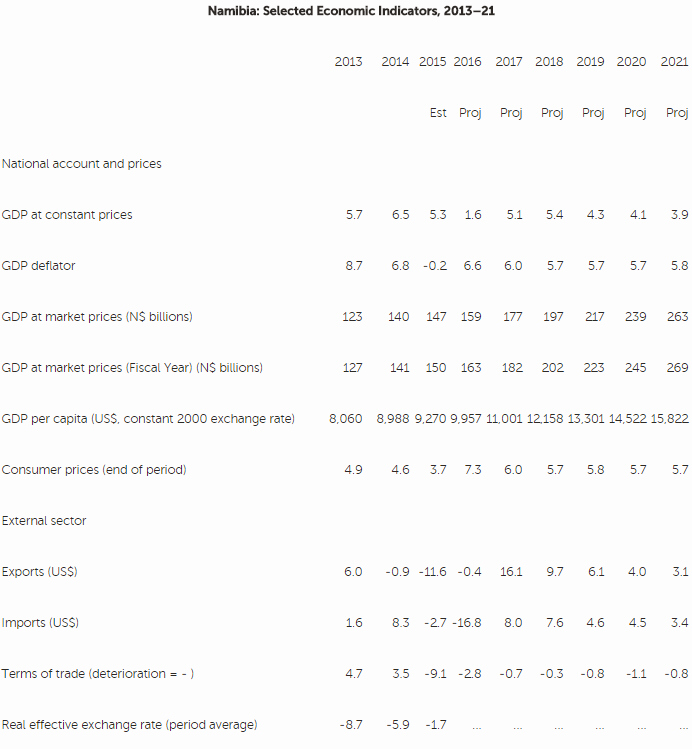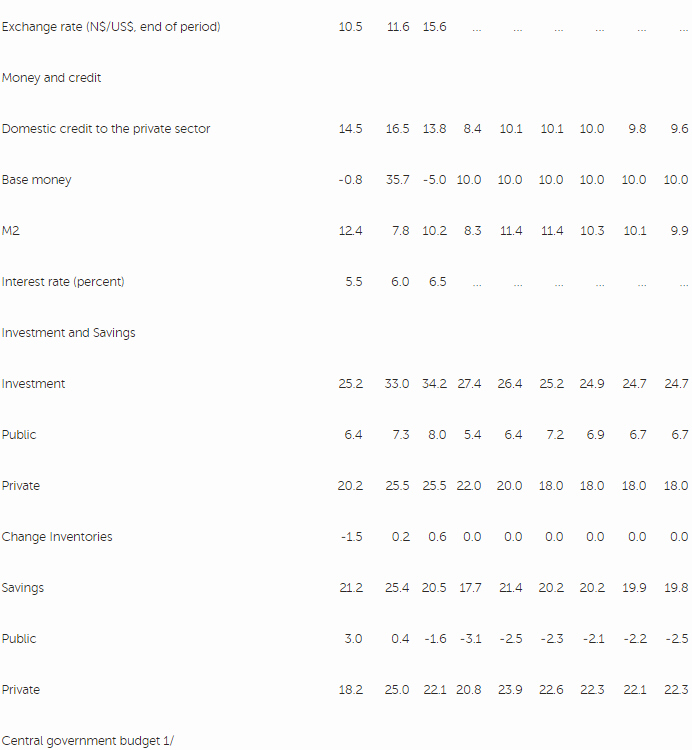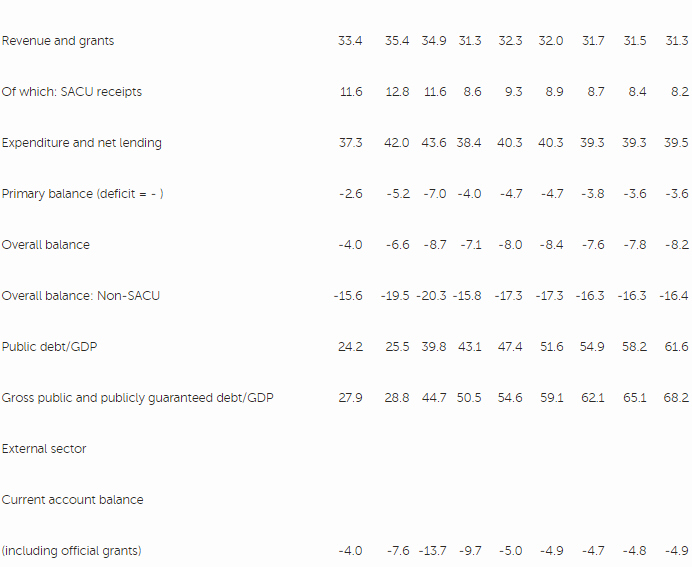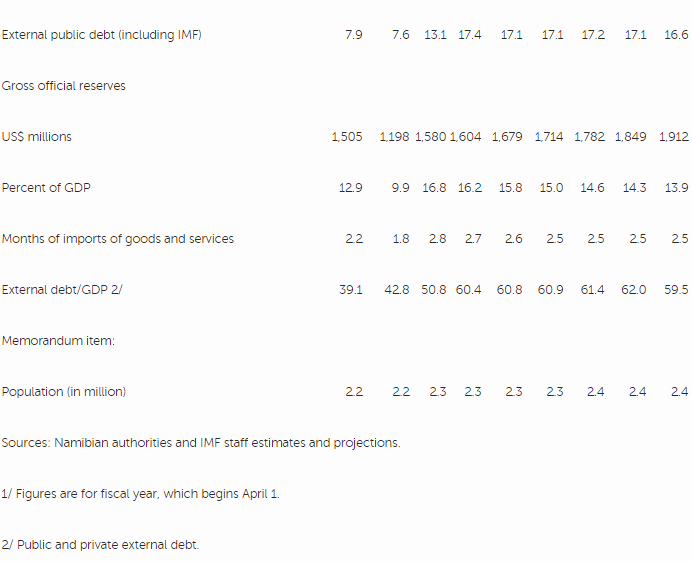IMF Executive Board Concludes 2016 Article IV Consultation with Namibia
On December 2, 2016, the Executive Board of the International Monetary Fund (IMF) concluded the Article IV consultation with Namibia.
Since the financial crisis, Namibia has experienced remarkable growth and economic progress. Strong policy frameworks and expansionary domestic policies have contributed to macroeconomic stability, robust growth, and rising living standards. Yet, deep-rooted structural impediments have kept unemployment high and unresponsive to growth, contributing to persistently high inequality.
In 2015, growth remained strong, but vulnerabilities increased. Despite a severe drought, real GDP grew by 5.3 percent buoyed by construction in the mining and housing sectors, and expansionary fiscal policy. However, with strong domestic demand and declining Southern African Customs Union (SACU) revenue, the current account registered a double-digit deficit. In combination, the large fiscal deficit, the depreciation of the Namibian dollar along with the South African rand, to which it is pegged, and the issuance of a Eurobond in November 2015 increased public debt to about 40 percent of GDP, close to the median of similarly-rated emerging economies. At the same time, continued rapid credit growth contributed to fast growing residential real estate prices and elevated household indebtedness. Headline inflation rose to 6.9 percent in September, from the 3.4 average in 2015, mostly due to rising food prices caused by the drought.
Fiscal and monetary policies are on a tightening course. The government has revised the FY16/17 budget and announced the intention to reduce the fiscal deficit in the coming years. In the context of the peg with the South African rand, the Bank of Namibia raised its policy rate in 2015 and in 2016 to 7 percent, at par with the South African Reserve Bank’s rate.
The outlook remains positive with considerable vulnerabilities and risks. Growth is projected to temporarily weaken in 2016 to 1.6 percent as the construction of large mines ends and the government starts consolidating; it would then accelerate to about 5 percent in 2017–18 as production from new mines ramps up. However, without further deficit reduction, public debt is projected to increase above 60 percent by 2021. On the positive side, the current account deficit is expected to narrow to around 5 percent of GDP on the back of larger mining exports. Inflation is anticipated to decline to 6 percent by 2017 as food prices normalize.
Downside risks dominate the outlook and stem mainly from possible further declines in SACU revenues and commodity prices, lower growth in mining and construction, and sudden corrections in housing prices and domestic credit. With limited buffers, shocks could be amplified by abrupt policy responses, especially if combined with sovereign credit rating downgrades. Linkages between banks and non-bank financial institutions could further amplify shocks.
Executive Board Assessment
Executive Directors welcomed Namibia’s robust economic performance and rising living standards in the past several years. Directors noted, however, that while medium‑term growth prospects remain positive, rising public debt, a widening current account deficit, low international reserves, and further declines in commodity prices pose risks. They underscored that continued strong commitment to sound policies and structural reforms will be key to preserving macroeconomic stability, managing financial sector risks, and promoting job creation and inclusive growth.
Directors welcomed the authorities’ debt and fiscal strategy, and agreed that additional consolidation over the medium term will be necessary to put public debt on a declining path. Noting the authorities’ preference for some front‑loading, they emphasized that adjustment efforts should be carefully calibrated and focus on both revenue and expenditure measures while safeguarding priority capital and social spending, thus minimizing the impact on growth. Directors noted that measures to contain the public wage bill, curtail transfers to state‑owned enterprises (SOEs) and other entities, as well as the strengthening of public financial management and revenue administration would help facilitate the adjustment and ensure equitable burden sharing. They also encouraged steps to reform SOEs to strengthen their governance, oversight, and performance.
Directors noted that fiscal consolidation would lift pressure on monetary policy and that, in the context of the peg with the South African rand, the authorities should consider maintaining the policy rate at par, or with limited positive spread, with the South African Reserve Bank’s rate.
Directors recognized that Namibia’s financial sector is generally stable, and called for continued efforts to monitor and manage risks from rising housing prices, household indebtedness, and linkages between banks and non‑bank financial institutions. They commended the central bank for introducing loan‑to‑value‑limits for non‑primary residence purchases, and recommended that further targeted macro‑prudential measures to tame housing price dynamics be explored. Directors recognized that the tight linkages between banks and non‑bank financial institutions are macro critical and stressed the importance of monitoring and assessing possible financial stability risks from such linkages. In this context, Directors encouraged steps to improve the financial regulatory architecture and to enhance the central bank’s capacity to assess macrofinancial risks and exercise macroprudential controls.
Directors emphasized that implementation of well‑focused structural reforms is necessary to address high unemployment and income inequality. They highlighted that priority should be given to reducing skill mismatches through targeted education and training programs, simplifying business regulations, including improving the functioning of the labor market. Directors welcomed the authorities’ intention to improve the targeting of key social assistance programs, including cash transfers and housing subsidies to make further inroads in reducing inequality and poverty.




Source: International Monetary Fund
- 297 reads
Human Rights
Ringing FOWPAL’s Peace Bell for the World:Nobel Peace Prize Laureates’ Visions and Actions

Protecting the World’s Cultural Diversity for a Sustainable Future

The Peace Bell Resonates at the 27th Eurasian Economic Summit

Declaration of World Day of the Power of Hope Endorsed by People in 158 Nations

Puppet Show I International Friendship Day 2020

